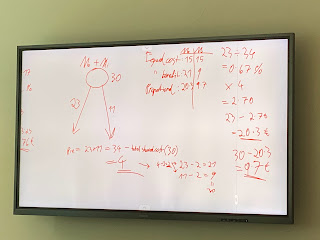Organizational Behavior Session 7 and 8
In the beginning of the first session, we started with a review of the previous class and went over the sources of disruption such as regulation, technology, customer and competition. With the current political climate, we can see that there are practical risk with the regulations, there can be a decrease of customers and markets and competitions with new sanctions and less competitions. The patterns of disruption can come from a competitor outpacing a market, new substitutes attracting new competitors, the rules of the games changing, sinking in competitive options, vanishing resources/competitor and market fit, and consolidation of value chains.
In the case of BMW, when tesla was disrupting the electric car industry with its innovative cars and consolidated value chains, BMW were also engaginng in electric mobility but were appraoching these trends carefully as it is one of the many segments they have. They took actions to address the ongoing increase of consolidations along the value chain by partnering up with mobileeye and intel, which they leverage the global possibilities, engaged in cooperation, alliance or acquire, to develop autonomous vehicle by 2021. They also launch a Drive Now carsharing offer as a response to the changing customer demands by using their own cars, obviously in times of change, they have to manage their staekholders actively. They also have a strong focus on e-mobility with the i3 and i8 models but their business is still perceived as an innovative and dynamic brand, just on less risky scale.
Then, we did a case study on the pattern of disruptions over the previous case studies that we had in class. The pattern of disruption we thought for both Starbucks and Kodak was the first pattern, it is a result of consumer behavior, competition/new players, and technology. In the case of Starbucks, it was constantly finding small innovations and incorporating it into their business models while still getting to job-to-be-done complete. It did not compromise the daily operations of the coffee shop, instead it garners more business because of the feasibility and the ease of getting Starbucks. Differently, Kodak was more focused on its core business models, which did not anticipate the rapid rise of the digital cameras. Kodak was too stiff in its ways and did not seize the opportunity present and instead, turned the disruptive innovation into a threat for its company.
In the case of disruptions from customer behavior, technology and competition, Starbucks have always strived for operational excellance, they focused on speed and agility through means of staffs, digital payments, is very customer-centric and is focused on ensuring that consumers enjoy the Starbucks experience from start to finish, they engage in alliances by cooperation with other brands such as Apple Music, and leveraged their global possibilities by expanding their stores worldwide. Kodak, faces alot of these distruption patterns such as being outpaced in the market, drowning in competition and vanishing resources/capabilities and market fit. Kodak's direct competitors uses innovation as a forefront in their business models and with new technologies comes a lot of opportunities and/or disruptions, which increases the complexity of the market. They had a vision and strategy but it is more so to develop on their current technologies rather than the upcoming one. They did foster research and development but did not invest heavily enough to become the leading innovator of their industry. And they kept on profiting from their core traditional business despite the rapidly changing business environment. Then, we moved on to the degree of disruption and how to derive respective action patterns. It is important to understand the adequate and fitting response to the degree of impact that has been analyzed. To a certain degree, the topic is understandable but because it was very cramped with information, so it will take the class some time to get used to this new concept.

Comments
Post a Comment